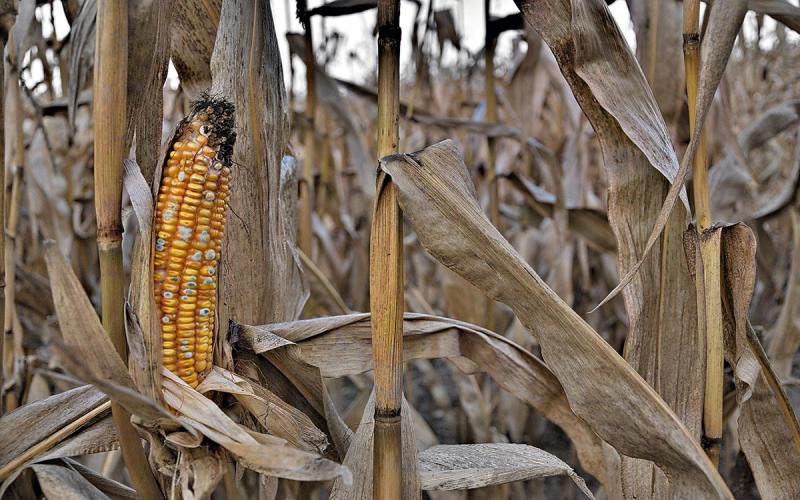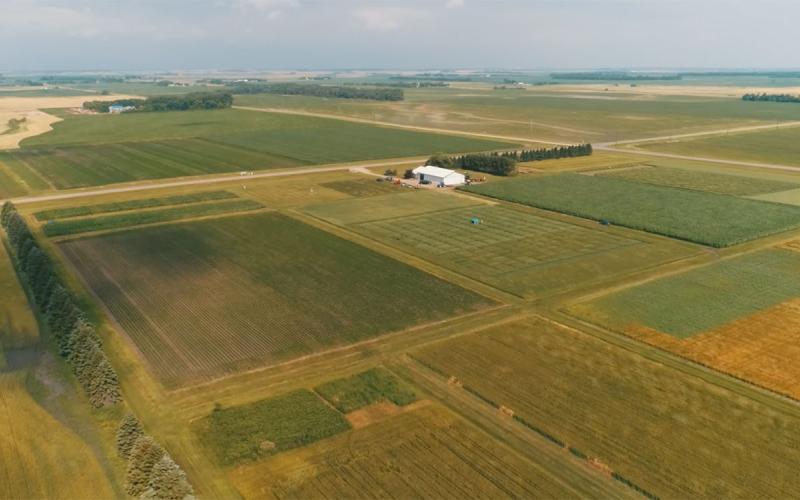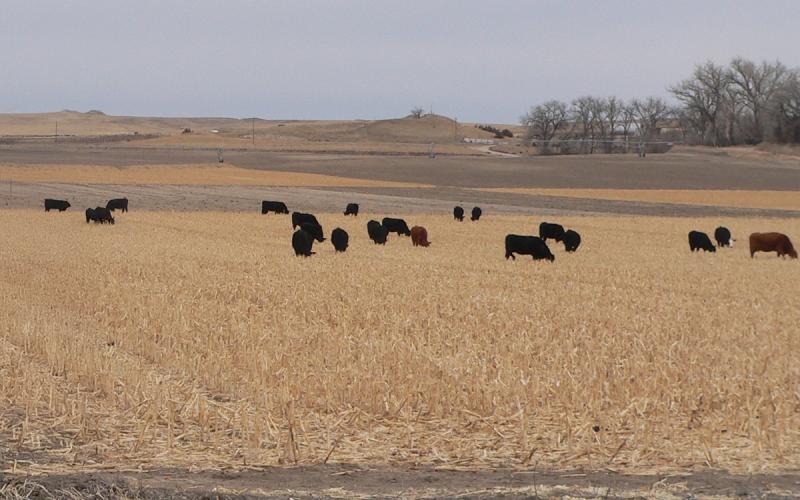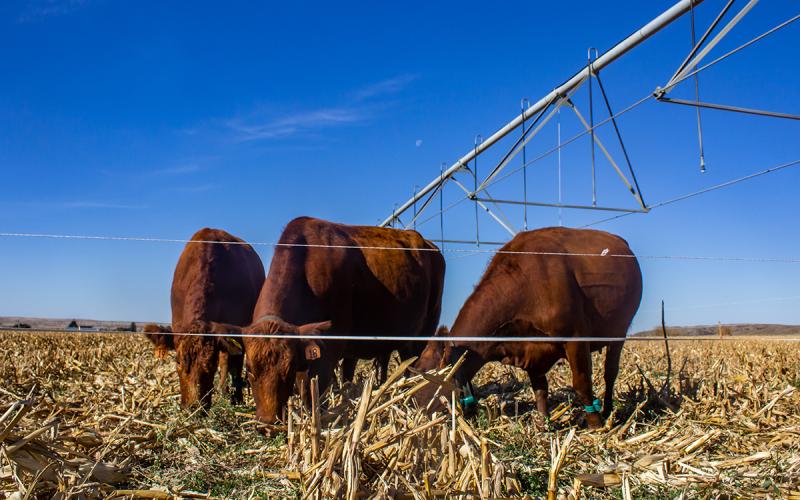Written collaboratively by Madalyn Shires, Connie Stunk, Connie Tande, and Tracey Erickson, former SDSU Extension Dairy Field Specialist.
Molds produce mycotoxins and these toxins can pose a hazard to animals and to people. Environmental stress caused by the weather (drought, hail, etc) or damaged crops increases the potential for mold and mycotoxin development. This article focuses on mycotoxins and how to manage them.
Mycotoxins: Common Questions

What is the difference between molds and mycotoxins?
Molds (which are fungal plant pathogens) produce mycotoxins, but molds by themselves do not cause problems for animals, though they can be problematic in grain storage as they continue growing and reproducing thus producing more mycotoxins. The mycotoxins produced by these molds can cause significant problems for livestock and significant reduction of prices at grain elevators.
Fungal pathogens which produce mycotoxins in corn are Fusarium graminearum (also known as Gibberella zeae) which causes stalk and ear rots and Aspergillus species which leads to ear rots. A common ear rot that does not produce mycotoxins is Stenocarpella maydis which causes Diplodia ear rot. Ergot, which is rare in corn but common in grasses, is caused by Claviceps species.
Mycotoxins with higher prevalence in corn are Aflatoxin (reduced performance/death more prevalent in drought), Zearalenone (ZEN/ZON) (reproductive problems), and DON / Vomitoxin (feed refusal). Fumonisins and T-2 toxins may occur in South Dakota, but far less frequently. We often see DON and ergot issues in wheat, other small grains, and grasses.
Why are aflatoxins a concern?
Hot weather and drought stress conditions promote the production of aflatoxin. The prime conditions for this fungal toxin development occur when the temperature is greater than 70 degrees Fahrenheit at night and the corn grain is in the latter stages of grain fill during drought stress. The mold found on corn is gray-green to olive-green in color, and the two most common fungi that produce this toxin are Aspergillus flavus and Aspergillus parasiticus.
Aflatoxins are a concern for livestock producers, especially dairy producers, since the toxins are harmful and potentially fatal to livestock. They are also carcinogenic to other animals and humans. Most commonly, aflatoxins negatively affect feed efficiency, reproduction, and suppress the immune system of livestock. The most common type of toxin, aflatoxin B1, is a carcinogen. This can become a concern as it can appear in milk when corn with aflatoxin concentrations over 20 ppb is fed to dairy cows. The legal limit for aflatoxin in milk, according to FDA regulations is 0.5 ppb (aflatoxin M1).
How are mycotoxin contaminated grains handled at elevators/feed mills?
There are a few options for reducing mycotoxin levels in contaminated grains at receiving areas. Mycotoxins are common in the dust that comes off of grains, so dust capture systems can help reduce levels. Heating grain to around 150 degrees Fahrenheit can also reduce the levels of most mycotoxins. In addition, mixing in mycotoxin-free grain can help reduce the overall mycotoxin levels whenever the grain is processed into livestock feed.
What about stored or saved grains?
Ensuring that grains are dry and stay dry (15% moisture or less) and cool (55 degrees Fahrenheit) while stored will help deactivate the molds which produce mycotoxins. However, grains that had mold on them will have a much lower germination rate if planted in the next season as the fungus is able to infect the emerging seedling. The result is lowered germination rates and higher seed/seedling rots.
What are the FDA guidelines for using aflatoxin-contaminated grain?
Typically, elevators do not accept corn with aflatoxin concentrations of 20 ppb (parts per billion). In addition, the Food and Drug Administration (FDA) has an “action level” of 20 ppb for aflatoxins in corn that regulates interstate commerce. This is the level at which federal agencies may take action, including the seizure of the corn or prohibition of its sale.
The FDA has established guidelines for using aflatoxin-contaminated grain as follows:
- Less than 300 parts per billion (ppb) for corn intended for finishing beef cattle.
- Less than 200 ppb for corn intended for finishing swine weighing 100 pounds or greater.
- Less than 100 ppb for corn intended for breeding beef cattle, breeding swine, or mature poultry.
- Less than 20 ppb for corn intended for lactating dairy animals, immature animals; animal species, and uses not specified above or when the intended use is unknown.
Will using preservatives in the feed (such as propionic acid) kill the toxin if it is already present in the feed?
NO. Adding mold inhibitors, drying corn, or adding acids will only stop additional mold growth, but it will not do anything against mycotoxins already produced and present in the feed. There are additives such as sodium bentonite, zeolite, and calcium aluminosilicate that work well as a binder and work best on aflatoxin. Yeast cell wall extracts (MOS and glucomannans) and enzymatic products are more effective when dealing with T-2 toxins, DON, and zearalenone. These products sequester the mycotoxins in feed and reduce the bioavailability of mycotoxins and increase excretion in the feces. The best advice is if you have seen mold on corn, test it before feeding to determine what, if any, mycotoxins may be present, especially if they are being fed to the milking or breeding animals.
Does going through the fermentation process or drying process in ethanol plants remove toxins from DDGS or Syrups?
No, in fact it makes it worse since it triples the concentration of mycotoxin in DDGS without inactivating it. Ethanol production plants screen corn for molds and mycotoxins; however, the allowable limits are set fairly high allowing for potentially more mycotoxins in DDGS.
Where can I go to get help dealing with mold and mycotoxin issues?
There are several reference sources that are available as producers consider options if they are dealing with mycotoxins in their corn or other grains. The resources speak to harvest, storage, and utilization considerations of corn that may be contaminated with mycotoxins. In addition to contacting SDSU Extension or the Plant Diagnostic Clinic with further questions, these on-line resources are also available:
- Dealing with Mycotoxin-contaminated Feeds at Feeding Time, SDSU Extension.
- Aflatoxins in Corn, Iowa State University Extension.
- Aflatoxin & Mycotoxin Risks Video, Mike Hutjens - University of Illinois.
- Management of Ergot, Crop Protection Network.
- Aspergillus Ear Rot, Crop Protection Network.
- Overview of Ear Rots, Crop Protection Network.
- Mycotoxins Management in Stored Grain, Crop Protection Network.
Mycotoxin Testing Services
Producers wishing to have their grain or feed tested to be used in animal feeding operations or to determine how to properly store grains potentially contaminated with mycotoxins can send samples to the SDSU Plant Diagnostic Clinic in Brookings, SD. Mycotoxin testing starts at $75/toxin plus a $25 sample fee and a full panel of testing is $300 plus a sample fee of $25 (see Plant Diagnostic Clinic Services and Fees).
References
- Decontamination of Mycotoxin-Contaminated Feedstuffs and Compound Feed, Čolović R, Puvača N, Cheli F, Avantaggiato G, Greco D, Đuragić O, Kos J, Pinotti L.
- Mycotoxin detection in corn and distillers dried grains for food security, Bilal Murtaza, Guo Ling-ling, Lili Wang, Xiaoyu Li, Ashiq Ali, Muhammad Kashif Saleemi, Aisha Khatoon, Shahbaz Ul Haq, Bowen Jin, Ji-bin Li, Yongping Xu.
- Defending Fields. Protecting Yields., Crop Protection Network.


